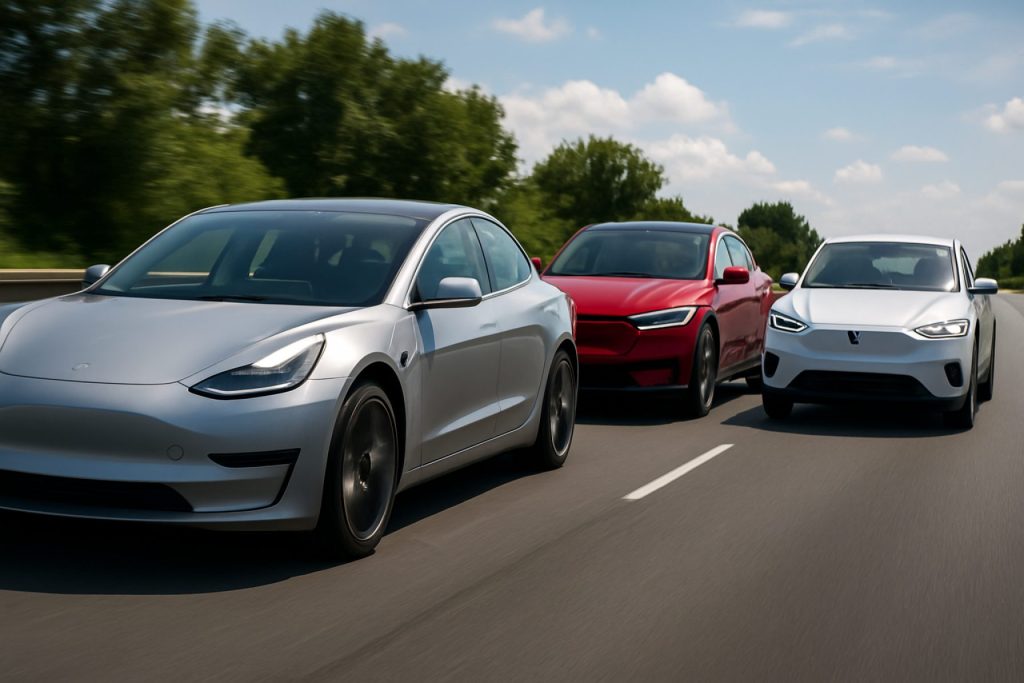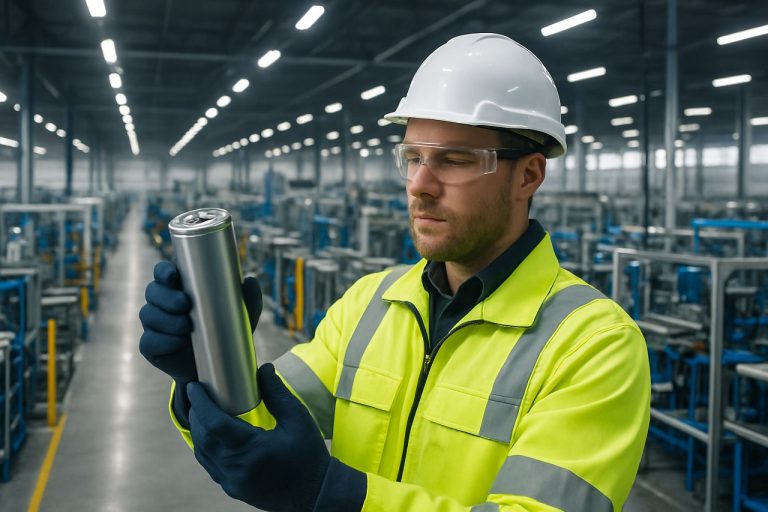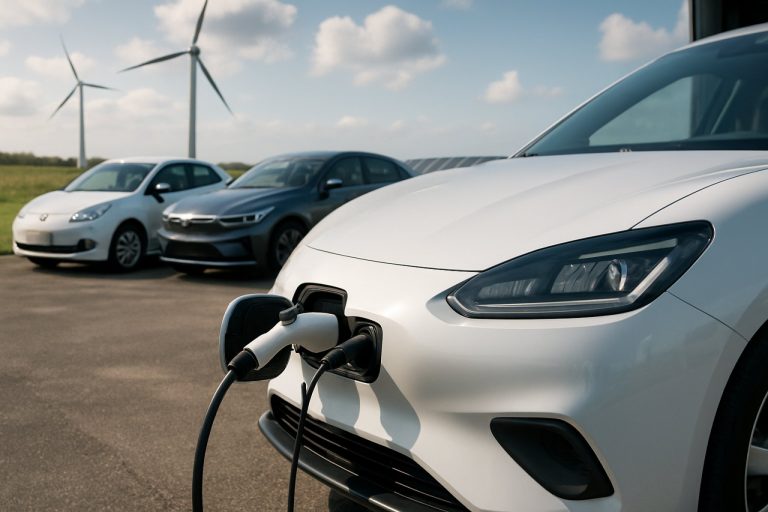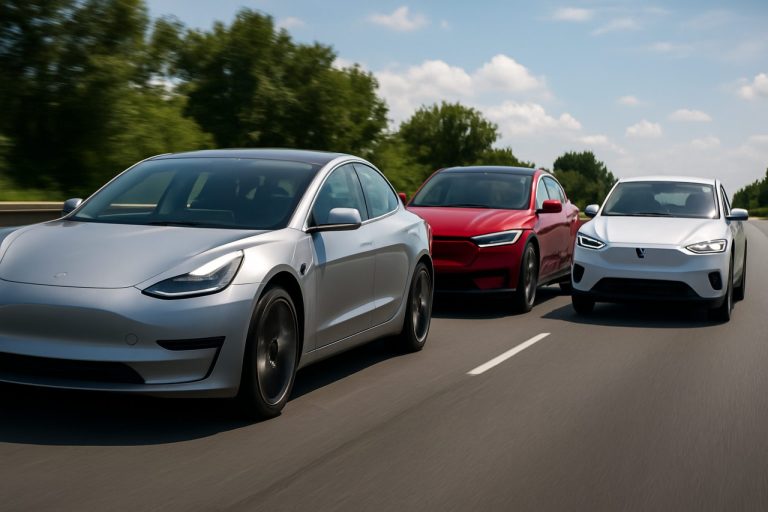
- Tesla leads the electric vehicle (EV) sector, expanding beyond cars into energy storage, solar, and infrastructure innovations, reflecting both growth potential and industry risks.
- Navitas Semiconductor is gaining investor attention for its gallium nitride and silicon carbide chips, enabling faster, more efficient power conversion in electric vehicles and other tech applications.
- Enphase Energy is advancing home energy solutions with microinverters and smart software, making residential solar and EV charging more accessible and efficient.
- These companies exemplify key trends: technology innovation, expanding EV infrastructure, and rising demand for clean energy as governments and consumers prioritize sustainability.
- Volatile stock performance is expected, but the ongoing shift toward electric mobility and smarter energy systems signals long-term market momentum.
The electric vehicle arena shimmers with promise and volatility, where fortunes flip as rapidly as algorithms can process trades. On Wall Street’s radar this week, three companies emerge at the center of electric mobility’s next chapter: Tesla, Navitas Semiconductor, and Enphase Energy.
Tesla, valued at a staggering $1.1 trillion, powers this trio with an unmistakable force. Its stock, recently inching toward the $342 mark, reflects both the obsessive optimism and underlying risks of an industry pioneer. Beyond its iconic cross-country Supercharger network and futuristic self-driving ambitions, Tesla’s clever expansion into energy storage and solar accompanies its global electric vehicle dominance. Here lies a company not just building cars, but rewriting the rules of power, mobility, and infrastructure.
Navitas Semiconductor may trade at just over $4 a share, but its innovation ripples across industries. Harnessing gallium nitride and silicon carbide, Navitas crafts circuits that pulse through smartphones, servers, and, crucially, the heart of tomorrow’s electric vehicles. Investors have swarmed the stock, propelling daily trading volumes to outsized heights. Gallium nitride chips offer faster, more energy-efficient power conversion than conventional silicon—one reason why tech giants and automakers alike are eyeing Navitas as a lynchpin for faster charging and slimmer, lighter EV architectures.
Enphase Energy, meanwhile, shapes the conversation around home energy solutions. Specializing in microinverters—devices that turn each solar panel into a self-contained power producer—Enphase sits at the intersection of solar, storage, and electric vehicle charging. Amid turbulent markets, the company’s stock has weathered storms, bolstered by steady demand for residential solar technologies. Its advanced software enables homeowners to control and monitor their individual energy flows, aligning with a world hungry for independence from fossil-fuel grids.
These three companies distill the electric vehicle narrative into a potent blend of engineering, strategy, and speculation. Share prices will inevitably rise and fall, but collectively, they point toward an irreversible momentum. As governments set ambitious zero-emission targets and consumers clamor for cleaner cars and smarter homes, the market’s gaze remains fixed on those shaping the technologies that will dominate the decade ahead.
For anyone watching the evolution of transportation, these stocks do more than trade on Nasdaq—they illuminate the pathways to our electric and sustainable future. Keep your eyes trained here, and on the latest developments at Tesla and other industry pace-setters, as the race accelerates anew.
Wall Street’s EV Titans: Hidden Facts and Expert Hacks for Tesla, Navitas, and Enphase Energy Investors
The Electric Mobility Surge: Unpacking the Hottest Stocks in Clean Tech
The electrification of transportation is reshaping Wall Street, and leading players like Tesla, Navitas Semiconductor, and Enphase Energy are front and center. While headlines often focus on soaring share prices, there’s a deeper narrative around innovation, risk, and opportunity that investors and enthusiasts should know. Here’s an expanded, expert-backed guide for 2024 and beyond—packed with real-world applications, key specs, trends, and strategic insights.
—
Tesla: More Than Cars—A Global Clean Tech Titan
Additional Facts & Insights
– Powerwall & Megapack Domination: Tesla’s energy storage products, especially the Powerwall (for homes) and Megapack (for utilities), have reported record deployments. Megapack’s sales reportedly grew by over 200% in 2023, securing contracts with international utilities ([source](https://www.tesla.com)).
– Full Self-Driving (FSD) Trials: Tesla rolled out FSD Beta to over 400,000 U.S. customers. Safety data suggests a lower crash rate per mile when Autopilot is engaged, but controversy persists over driver attention and software reliability.
– Production Scale: Tesla’s Giga Texas and Berlin plants now each exceed 500,000 vehicles/year in capacity, ramping global Model Y and Cybertruck output.
– Robust Supercharger Expansion: Tesla’s Supercharger network now tops 50,000 stalls worldwide, with pilot programs opening access to non-Tesla EVs—a strategic move for government incentives and wider market reach.
– Competitor Comparisons: Ford, GM, and Hyundai are racing to catch Tesla’s manufacturing scale, battery cost control, and AI-driven vehicle software.
– Pricing & Affordability: Tesla models’ prices fluctuate frequently. For instance, the Model 3 now starts at under $40,000 in the U.S. with federal EV tax credits applied.
Pros & Cons Overview
– Pros: Industry-leading battery tech, vertical integration, global brand, Supercharger dominance, aggressive AI/software push.
– Cons: Regulatory scrutiny, cybersecurity threats, intense competition (BYD, legacy automakers), supply chain reliance (nickel, lithium).
—
Navitas Semiconductor: Next-Gen Power Brains
What Sets Navitas Apart
– Gallium Nitride (GaN) & Silicon Carbide (SiC): These advanced semiconductors allow for higher voltage, lighter components, and significant energy savings v. conventional silicon. GaN chips can charge devices up to 3x faster while reducing energy loss ([source](https://navitassemi.com)).
– Key Customers: Navitas’ chips power not just EVs, but also Apple/MacBook chargers, fast data center power supplies, and solar microinverters.
– How-To Tip—Spotting Growth: Watch for partnerships with major automakers (rumored deals with BMW and Hyundai) and announcements of high-volume supply contracts.
Controversies & Limitations
– Market Volatility: Smaller cap and newer to market, Navitas stock swings can be dramatic. GaN manufacturing yields are still catching up to mature silicon processes.
– Production Scalability: Analysts cite potential supply chain bottlenecks due to rare material (gallium) sourcing.
Life Hack for Investors
– Track patent filings and tech symposium presentations. Navitas often reveals next-generation chip designs at industry events, signaling future product pipelines and market adoption.
—
Enphase Energy: Smarter Solar, Smarter Homes
Advanced Features & Use Cases
– Modular Microinverter Systems: Unlike traditional string inverters, Enphase’s microinverters optimize each panel individually. This enhances system output, especially under partial shading—see up to 25% higher annual yield versus traditional setups.
– Battery Expansion (IQ Battery): Homeowners can add modular storage for blackout protection and time-of-use energy savings.
– Smart Monitoring: Enphase’s software allows smartphone management of live solar output, battery status, and connected EV charging—all in one interface.
Real-World Compatibility
– Enphase systems integrate seamlessly with leading home automation platforms like Google Home and Amazon Alexa.
– Many solar installers recommend Enphase due to its reliability, 25-year product warranty, and ease of expansion.
Sustainability & Security Notes
– Rigorous cybersecurity protocols protect home energy networks, with regular automatic firmware updates and robust encryption.
—
Market & Industry Trends to Watch
– EV Adoption Surge: IEA projects global EV share to surpass 18% of new car sales in 2024, doubling since 2022 ([source](https://www.iea.org)).
– Battery and Chip Shortages: Ongoing lithium, cobalt, and rare semiconductor supply disruptions could limit near-term growth and impact pricing.
– Government Incentives: The U.S. Inflation Reduction Act and European Green Deal provide billions in subsidies for EVs, charging, and renewable energy tech.
—
Pressing EV Stock Questions—Answered
1. Are these stocks still good buys in 2024?
Many analysts remain bullish, especially on Tesla’s long-term prospects and Enphase’s solar growth, but advise dollar-cost averaging due to volatility. Navitas is higher-risk, higher-reward—best for a small, speculative portion of your portfolio.
2. What are the biggest risks?
– Regulatory: Changing emission rules, tax credit eligibility.
– Competition: Rapid tech shifts can make today’s leader tomorrow’s laggard.
– Supply Chains: Geopolitical tensions (esp. China’s rare earth dominance) and raw material shortages.
3. Where else can I learn the latest?
– Official company sites:
– Tesla
– Navitas Semiconductor
– Enphase Energy
– Industry news: Bloomberg, Reuters, and specialty outlets like InsideEVs and Electrek.
—
Actionable Tips: How to Get Ahead in the Electric Revolution
– For Investors: Diversify with ETFs that include all three companies, such as the iShares Expanded Tech Sector ETF.
– For Homeowners: Consider pairing rooftop solar with Enphase microinverters for enhanced reliability and app-based energy management.
– For Tech Savvy: Follow company investor presentations for early hints at product launches and partnerships.
– For Car Buyers: Leverage new tax credits to lower EV and home battery costs—many deals expire or change annually.
—
The clean-tech sector is volatile but brimming with long-term opportunity. Stay informed, diversify, and think holistically about the entire electric ecosystem—from battery minerals to charging infrastructure. The future of mobility depends on it!



